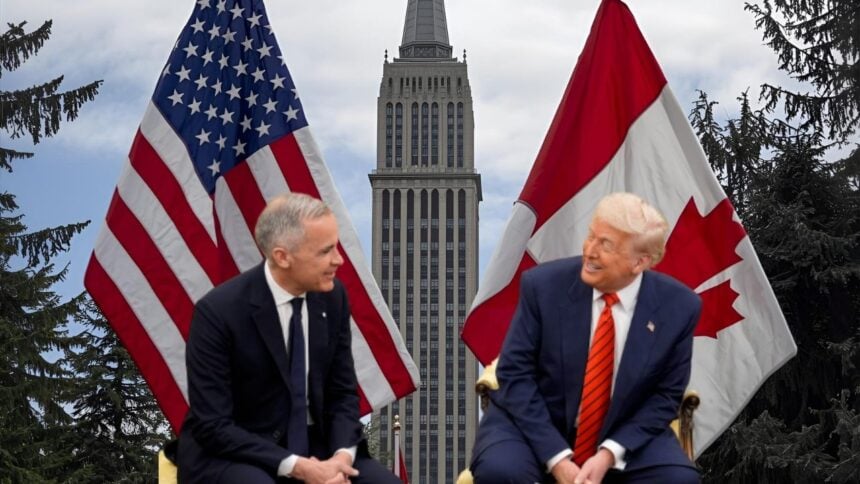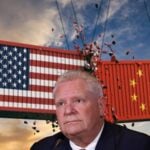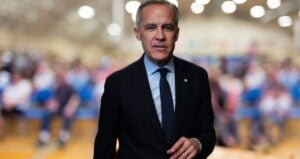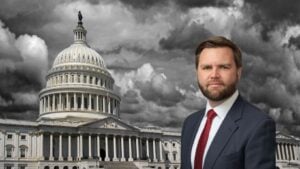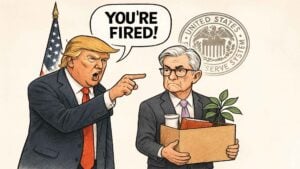The leaders of North America’s closest trading partners met in Washington on Tuesday with little goodwill to spare.
Canadian Prime Minister Mark Carney sat down with President Donald Trump at the White House in a bid to arrest a steep deterioration in relations and to lay groundwork for a pivotal review of the continent’s trade pact next year.
Ottawa billed the trip as a working visit focused on economics and security after both sides launched consultations to prepare for the 2026 assessment of the United States-Mexico-Canada Agreement, known as USMCA.
Carney enters the talks under pressure from manufacturers, energy producers, and farmers at home who have been squeezed by a wave of U.S. protectionist measures.
Canada wants relief from sector-specific levies, notably elevated U.S. steel and aluminum tariffs that have rippled through supply chains on both sides of the border.
The meeting also follows a series of polarizing statements from Trump about Canada’s status that have sharpened public sentiment and hardened political resolve in Ottawa.
Officials close to the talks describe the immediate goals as narrow: prevent new trade shocks, secure pathways to exemptions where possible, and set a timetable for targeted negotiations before the 2026 review locks in the next phase of North American rules.
Both countries have begun internal consultations to map their positions for the first USMCA joint review, a process expected to surface flash points on autos, rules of origin, agriculture, and digital trade. See related coverage: Canada and Mexico tighten partnership as Trump roils trade.
The White House did not preview deliverables ahead of Tuesday’s meeting, while Ottawa framed the trip as essential to protecting Canadian jobs.
The political backdrop is stark, public opinion in Canada has soured on the United States this year as tariffs and caustic rhetoric piled up.
Canadian travel and cross-border business activity have softened at the margin, and executives warn that boardrooms are modeling longer-term diversification if policy volatility persists.
The U.S. is Canada’s dominant market, and Canada is a top supplier of oil, gas, electricity, and critical minerals to American industry.
Any incremental progress on tariff relief or regulatory clarity would be welcomed by companies that have delayed investments while watching the dispute escalate.
Carney’s team also arrived with a security agenda that includes missile defense cooperation and cross-border interdiction efforts.
Canadian officials argue that upgrading continental defenses and coordinating on critical minerals would strengthen North American competitiveness while creating political space for trade compromises.
The prime minister’s office cast the trip as part of a broader reset that links the economic file to shared defense interests, a framing designed to appeal to constituencies in Washington that prioritize hard security.
Even modest outcomes could matter. Clarity on tariff waiver processes or timelines would help steel, aluminum, and auto suppliers price contracts with less guesswork.
Signals that both capitals will avoid new unilateral actions heading into the USMCA review would ease pressure on the Canadian dollar, which tends to weaken when trade risks flare.
Businesses will also look for any sign that Ottawa and Washington can coordinate on critical mineral supply chains at a time when manufacturers are searching for non-Chinese inputs for batteries and electronics.
Carney’s visit underscores how far the relationship has fallen and how central the next 12 months will be.
With consultations underway and the 2026 review calendar advancing, the path to stability likely runs through a series of incremental, technical fixes rather than a grand bargain.
